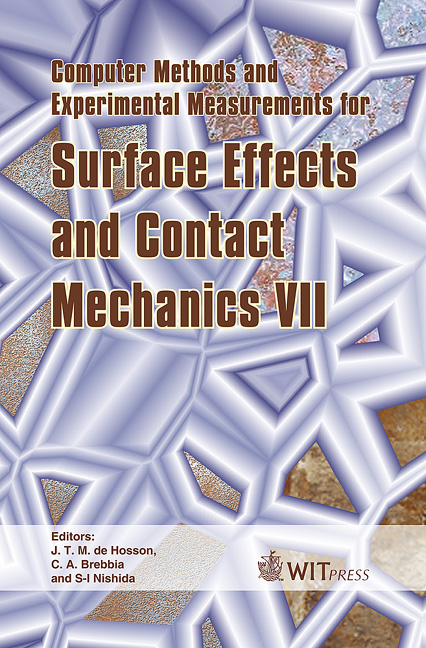Contact Of Multiple Surfaces
Price
Free (open access)
Transaction
Volume
49
Pages
6
Published
2005
Size
362 kb
Paper DOI
10.2495/SECM050261
Copyright
WIT Press
Author(s)
J. Jäger
Abstract
Contact problems of rough surfaces require the consideration of multiple contact areas. Characteristic properties can be calculated with approximative models, which are well documented in the literature on contact mechanics. Advanced numerical methods are necessary for the calculation of accurate solutions. In this paper, a recursive BEM method is presented, which is explained in a recently published book. Some examples illustrate the solution of large multiple contact areas and demonstrate the application of the so-called reduced friction method that was developed by the author. 1 Introduction Many contact problems do not permit analytical solutions in closed form. Under certain assumptions, however, the frictional problem can be reduced to the normal problem (Jäger, [3]). The reduced friction model assumes that each stick area H is a smaller contact area C*. According to Coulomb’s law q = f p, the tangential traction q in the slip area C – C* is proportional to the normal pressure p of the actual contact area C. On this condition, an approximation for the tangential traction q in the stick area C* is the difference of the slip stress of the contact area and the stick area f (p-p*). For half-spaces and half-planes, the proportionality between normal pressure and tangential traction carries over to the tangential displacement ux and the normal displacement uz. ( *), ( )* x z z z q f p p u f u f u u κ κ = − = ∆ = − (1) Integration of (1) gives the equation for the forces Fx and Fz. The normal force depends on the displacement ζ = uz(x0) of a datum point x0, usually the origin of the coordinate system. The tangential displacement ξ = ux(x0) is given by (1)
Keywords





